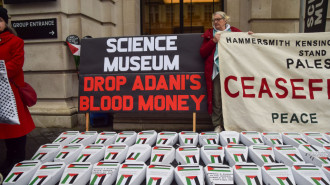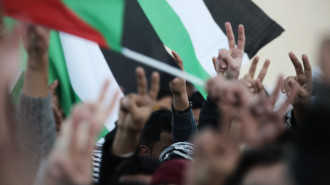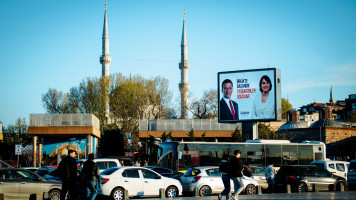
The Wastetown: A mother’s desperate search for her son

“How far will she go?” This is the main question spectators may ask themselves while seeing the desperate protagonist of Ahmad Bahrami’s third feature in action.
Titled The Wastetown and world-premiered in the international competition of this year’s Tallinn Black Nights Film Festival (11-27 November), the picture has much to share with the Shahriar-born helmer’s previous effort, The Wasteland, especially in terms of its aesthetics and direction.
That being said, The Wastetown is an entirely brand-new viewing experience. The intriguing set-up sees our lead character, a woman in her forties called Bemani (played by Baran Kosari), visiting a remote car demolition workshop.
"As in the case of many great films, it [The Wastetown] tells us the story is of universal significance, with the potential of winning the hearts of a very large audience"
From the first conversation she has with a guard standing at the entrance of the site, we realise she has spent ten years in jail after killing her husband.
Temporarily released, the woman begins looking for her son, who was allegedly given to her husband’s family. Bemani’s brother-in-law Ebi (Ali Bagheri, who also appeared in The Wasteland) works there, and she finds out that the man has sold the child to a rich family.
We also realise that the two of them were engaged in some kind of sentimental relationship at the time of the murder and that this pushed Ebi’s brothers to believe he was Bemani’s accomplice.
From this moment on, spectators will witness Bemani’s endless efforts to seek the truth and to find her son. Her actions will force her to question the meaning of her own existence along with her moral stance much more than she would have ever expected.
As the plot moves on, shame, abuse and regret will also become prominent themes which all the characters will end up dealing with.
Stylistically speaking, Bahrami’s direction is controlled and slow-paced, but also capable of creating a highly tense, sombre atmosphere.
Overall, the feeling is that Bahrami took the best of contemporary stage directing and dramaturgy, without forgetting the importance of some well-oiled tricks and plot devices.
More specifically, viewers may appreciate the modernity of the picture’s dry dialogues and the cast’s understated performances, but they may be also put at ease by the plot’s Spatio-temporal linearity; the clarity of the characters’ conflicts (commendably, these are not developed too predictably and manage to keep us hooked) and the presence of some old-school tools including a bizarre “Chekhov’s gun” and a general “show, don’t tell” golden rule applied throughout.
The writer-director tasks his DoP Masoud Amini Tirani (The Wasteland, Majid Barzegar’s The Rain Falls Where It Will) to shoot the film entirely in black-and-white, opting for a 4:3 format.
The black-and-white cinematography enhances the perceived emotional distance between the characters and the viewers, gradually transforming them into some sort of archetype and fitting well with the minimalist mise-en-scene adopted throughout. On the other hand, the choice of using a 4:3 format is perhaps less remarkable.
While in some scenes such format gives us the impression that the characters are somewhat ‘caged’ and oppressed, in some others it simply shrinks space even when more of it is actually needed. This happens in particular with long shots depicting the workshop’s desolate landscape or whenever a character enters the frame or interacts with some of the props.
In addition, Bahrami tasks his composer Foad Ghahremani (The Wasteland) to deliver an anguishing score, but still well-dosed and never over-the-top. In particular, the jarring, pounding notes of Ghahremani’s accordion manage to deliver a wide spectrum of unsettling emotions as well as to convey effectively the feelings of incapability and hopelessness.
The closure of the narrative arc comes at the right time.
In it, the soundscape plays a major role, highlighting the pathos of the woman’s fate. All in all, Bahrami gifts the viewers with an engaging – and very brutal – picture, wherein there is little room for mercy and understanding, but there is much to discover about human nature and its darkest aspects.
As in the case of many great films, it tells us the story is of universal significance, with the potential of winning the hearts of a very large audience. In his festival notes, Mihkel Möölman, one of the Estonian gathering’s programmers, points out how the Iranian helmer, with this compelling third feature, “stands out as an author with a distinctive style.” And he is absolutely right.
It would be great, however, to see how Bahrami’s unique touch would affect his future works, perhaps within an entirely different setting or while tackling a new film genre.
Davide Abbatescianni is an Italian Film Critic and Journalist based in Rome
Follow him on Twitter: @dabbatescianni



